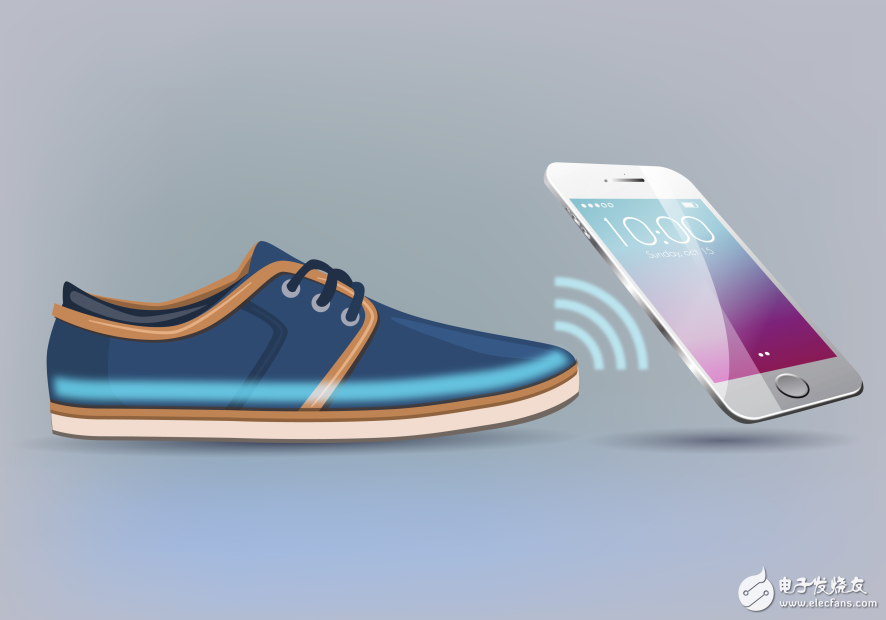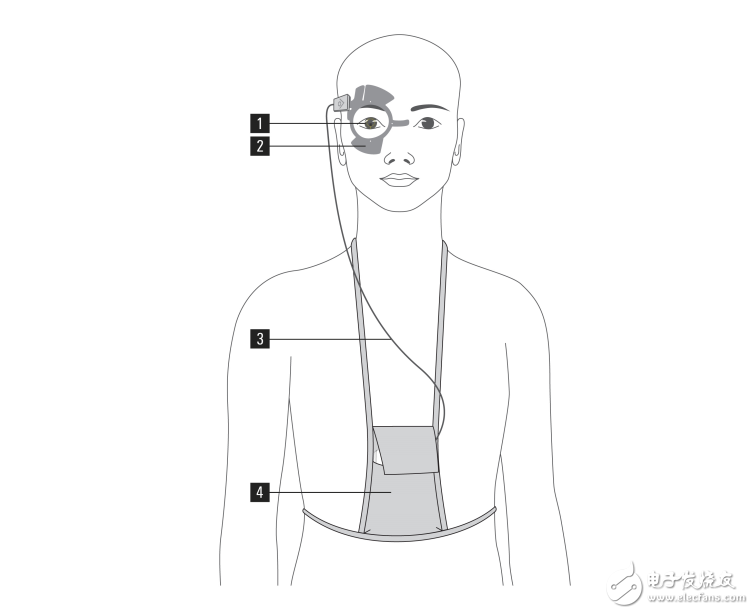Doctors often tell patients to "listen" to their bodies and pay attention to what the body will tell you. Today, the technology being developed will truly be able to listen to our bodies and properly process this signal to help determine the best implementation.
The trend of population aging has been widely reported by the media, and the continuous decline in the birth rate of the global population has accelerated aging. Together, these trends mean that fewer people will be able to care for a larger base of the elderly population in the coming decades. In the short term, nothing can change these social statistics, but it seems that technological advances can intervene and help through visualization and even literally.
As integrated semiconductors continue to shrink in size and increase in functionality, the concepts of artificial intelligence, cloud computing, and ubiquitous connectivity will be combined in a breakthrough way, which can best change the situation in the healthcare industry. The possibilities of various developments are very large, the market demand is also increasing, and human nature has a strong willingness to make positive changes in essence.
Today, the typical representative of wearable technology is the small device most commonly worn on the wrist, which is used to monitor statistics such as activities and the wearer's pulse rate. In short, this is an enhancement effect affected by consciousness. With the development of technology, small devices in the future may be directly woven into the clothes we wear, so that it is not easy to affect humans themselves, so it is easier to accept.
As is often said, smart fabrics may change the way we monitor many scenarios, but perhaps their greatest potential lies in healthcare. The use of technology to monitor the patient's condition and appropriate medication is a very active research area, and some results have begun to appear.
Sensing pressure
During the period of recovery from pain, the pressure applied or withdrawn in a certain area of ​​the body may be of particular concern. Swelling is part of the healing process, but it must be monitored because it may also be a precursor to secondary infection. Similarly, if patients do not have regular activities, they can quickly form pressure sores, thereby inhibiting the healing process. The answer is to monitor the patient's wounds and their general movements, or whether they lack them.
One way to achieve this is to use sensors that can be woven into bed sheets or clothing. Silicone-coated conductive yarn woven into bedding is currently under development. It can monitor humidity and movement and alert nursing staff when patients need care. The hospital is also using the same technology to enable the bed to move automatically according to the needs of the patient, thereby reducing the burden on nursing staff.
The same technical principles are being integrated into dressings and bandages to monitor the pressure exerted by the body during the recovery period of the pain. For example, you can monitor whether the dressing is too tight, or record the rate of swelling in the infected area.
There are many methods for measuring the pressure of a given medium. Traditionally, blood pressure was recorded by measuring the pressure required to restrict blood flow. This process can now be performed automatically using a pressure sensor, which is installed side by side with the compressed air used to apply pressure. Therefore, the blood pressure monitor has become a consumer device that anyone can use in a comfortable home. Integrating the same technology into fabrics such as sportswear is actually not a huge leap forward.
Pressure sensors can also be used in other areas, such as insoles, to monitor the gait and activity of patients with peripheral neuropathy. This is a condition that prevents the brain from receiving information from specific areas of the body (such as the feet). Figure 1 shows this system of Orpyx, which can record the data of the insole and wirelessly transmit it to the smartphone application. By using sensors to monitor the pressure on the patient's feet and provide feedback, it can help prevent the formation of ulcers. In extreme cases, ulcers may lead to the need for amputation.

Figure 1: The Orpyx system uses a pressure sensor embedded in the insole and is wirelessly connected to the smartphone
The sensor embedded in the dressing can measure the deformation of the skin to evaluate the pressure applied by the swelling of the limb, which is the "smart fabric" that the researchers are currently developing.
By directly integrating pressure monitoring into smart fabrics, it is easier to grasp long-term development trends, thereby helping to diagnose diseases such as cardiovascular problems early.
Smarter plaster
Thanks to the development of nanotechnology, it has become a reality to measure the level of hydration by monitoring changes in skin electrical properties. By embedding tiny wires into stretchable fabrics that act directly on the skin, small electrodes can monitor hydration and transmit information in real time. The same technology can also be applied to the apparel industry.
A similar and effective diagnostic method can be used in smart dressings to pass a small current through human cells and measure its impedance. This is a very meaningful extension of the technique called impedance spectroscopy. By measuring the changes in capacitance and resistance that cells exhibit when they decay, they can be used to create smart bandages so that bedsores can be recognized before the human eye sees them.
Although electronic technology is an important part of smart fabric solutions, it is also being developed in cooperation with traditional healthcare, including research on how to use drugs more effectively. A team of researchers from the University of Nebraska-Lincoln, Harvard Medical School, and Massachusetts Institute of Technology has demonstrated that smart dressings can not only monitor wounds, but also The potential for direct medication.
The team interpreted smart dressings as the first bandages that can be released based on drug dosage, such as painkillers and antibiotics, as well as drugs that promote healing and tissue regeneration. In essence, it is done by implanting drugs into the gel, which in turn coats the wires woven into the bandage. The microcontroller embedded in the bandage controls the current flowing through the wire, causing it to heat the gel and release the drug it carries directly to the infected area. Trials have shown positive results, and the team is investigating indicators such as glucose and pH using integrated sensors to fully automate the drug delivery and release process.
Connected Healthcare
Throughout the Internet of Things, wireless connections provide a way to transfer data to the cloud, and artificial intelligence can be used to better utilize the trend of "big data" analysis. By applying this process to the Medical Internet of Things (IoMT), these data can eventually be used to improve the treatment of other patients with similar diseases.
This will require a more comprehensive approach to use technologies in the medical field to integrate multiple disciplines into one solution.
Researchers at the InsTItute of Life Science (Swansea University) are studying how to integrate sensors brought by the latest developments in nanotechnology into smart bandages with 5G connectivity, which can not only monitor wounds, but also remote Monitor wounds in real time. The method will also make it possible to use 3D printers to make bandages.
Nanotechnology is closing the gap between biology and technology, and will become a practical technology for IoMT. Research currently underway includes how to use nanoparticles to provide treatment for specific cells in the body, and has shown some positive results. One of the initial advantages of targeted therapy at the cellular level is that the body no longer needs to metabolize drugs in all parts, which will lead to lower dose levels, more effective treatment, and ultimately reduce the cost of medical services.
MEMS in the medical field
MEMS technology has completely shaped the mobile phone industry by providing accurate 3-axis, 6-axis, and 9-axis motion sensing in small packages. The same technology can be widely used in wearable fitness trackers, and MEMS microphones have revolutionized hearing aids, but MEMS has greater potential for future development.
By mounting the MEMS microphone directly on disposable contact lenses, changes in the intraocular pressure (IOP) of the eye can be measured. This change often indicates a change in corneal shape, which may be an early sign of glaucoma. At present, Swiss company Sensimed can provide IOP sensors including wireless communication and integrated MEMS. Figure 2 shows that the system consists of three components: disposable contact lenses (1) with embedded sensors and transmitters, separate antennas (2) worn around the eyes, and connection via thin wires (3) ) Data logger (4).

Figure 2: Sensimed's IOP sensor integrated into disposable contact lenses, which are powered and connected via Near Field Communication (NFC)
The system uses NFC technology to provide wireless power to the sensors, which is sufficient to make measurements and transmit the information back to the antenna. Since it is no longer necessary to use a hard-wired power supply (usually a battery), and the power supply and its connections are often the largest part of the system, this method may be used for various other IoMT devices. By using the functions of NFC, many other types of sensors and the microelectronic devices needed to control them can be embedded in smart fabrics.
in conclusion
Smart fabrics are changing the nature of traditional healthcare and have been supported by unprecedented cross-fusion of technologies. Although many applications are still limited to research laboratories, the pace of development is accelerating, and the medical Internet of Things has great application potential to change the traditional doctor-patient relationship forever.
Under Desk Foot Warmer,Under Table Foot Warmer,Electric Foot Warmer Under Desk,Under Desk Electric Foot Warmer,Foot Warmer Under Office Desk
Ningbo Sinco Industrial & Trading Co., Ltd. , https://www.newsinco.com
